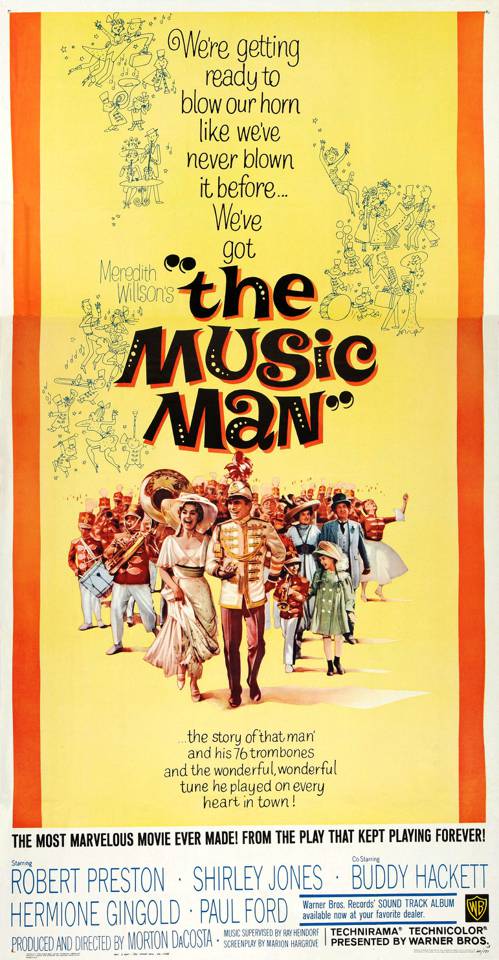
FAQ About The Evolution of Musicals in Film and Media

What is the history of musicals in film?
Musicals have been a part of film history since the advent of sound in cinema. The genre gained significant traction in the early 1930s with classics like The Broadway Melody (1929) and 42nd Street (1933). Through the years, the style evolved with the golden age of Hollywood in the 1950s and 1960s, featuring works by directors like Vincente Minnelli and Stanley Donen. By the 1970s and 1980s, musicals often took on more eclectic and varied themes, a trend that has continued into modern times with digital innovations and cross-platform adaptations.

How have musicals adapted to television?
Musicals have adapted to television in several ways, including live broadcasts and series adaptations. Shows like Glee and Smash have integrated musical performances into their storytelling. Additionally, live televised productions of stage musicals, such as NBC's The Sound of Music Live!, reflect an interest in real-time, event-based musical broadcasting.

What role has technology played in the evolution of musicals?
Technology has significantly influenced the evolution of musicals by enhancing production quality and distribution. Sound recording advancements facilitated the integration of synchronized music and dialogue, while CGI and digital effects have expanded the visual aesthetics of musicals. Streaming services have also democratized access, allowing a wider audience to experience diverse musical content across the globe.

How have cultural shifts influenced musical films?
Cultural shifts have had a profound impact on musical films, often reflecting societal changes and trends. For example, the emergence of rock musicals in the 1970s paralleled the rise of the rock music movement. More recently, musicals like The Greatest Showman and Hamilton have incorporated contemporary themes and diverse casts, aligning with today's cultural focus on representation and inclusivity.

What are some iconic musicals that have shaped the genre?
Several musicals have left an indelible impact on the genre, including classics like Singin' in the Rain, The Sound of Music, and West Side Story. These films not only showcase impressive musical talent but also innovative storytelling techniques. Recent hits such as La La Land and Hamilton continue to influence the genre by merging traditional elements with modern narratives.

In what ways have digital platforms changed the presentation of musicals?
Digital platforms have revolutionized the presentation of musicals by providing more accessible content and interactive experiences. Streaming services like Netflix and Disney+ offer a vast library of musical films and stage recordings. These platforms have enabled broader reach and new opportunities for musicals to gain popularity, such as Hamilton on Disney+ and interactive film experiences like Bandersnatch.

What is the future outlook for musicals in media?
The future of musicals in media looks promising, with continual innovation and cross-platform integration. The increasing popularity of streaming services suggests a shift toward digital-first releases. Additionally, virtual reality and interactive storytelling offer exciting possibilities for immersive musical experiences, potentially transforming how audiences engage with musical narratives.

What are some common themes explored in musical films?
Musical films often explore themes such as love, dreams, social issues, and self-discovery. These themes are conveyed through music and dance, creating an emotional and immersive narrative. Examples include the pursuit of dreams in La La Land and social justice issues in West Side Story.

How do musicals in media reflect societal values?
Musicals in media often act as mirrors to societal values, addressing contemporary issues and ideologies. They can challenge norms or celebrate cultural changes, such as the focus on diversity and representation in recent productions like In the Heights and the revival of West Side Story. Through engaging narratives, musicals can both reflect and influence public discourse.

What is the difference between Broadway musicals and film musicals?
Broadway musicals often emphasize live performance and audience interaction, while film musicals leverage cinematic techniques such as special effects and editing. This allows for more elaborate visual storytelling in films. Additionally, film musicals can reach a global audience more easily, whereas Broadway productions are confined to the stage.

What impact did musicals such as Disney animated films have on the genre?
Disney animated musicals have played a pivotal role in revitalizing and popularizing the musical genre for younger audiences. Classics like The Lion King and Frozen combined animation with memorable soundtracks to create cultural phenomena. These films have kept the musical art form relevant and engaging across generations.

Why are musicals often associated with spectacle and fantasy?
Musicals are associated with spectacle and fantasy due to their vibrant use of music, dance, and visual elements to craft unique, often larger-than-life worlds. This blend of artistic components allows musicals to transcend reality, providing audiences with an imaginative and often escapist experience.

How has musical storytelling evolved over the decades?
Musical storytelling has evolved from straightforward song-and-dance numbers to more intricate and narrative-driven productions. With influences from diverse music genres and integration of complex themes, modern musicals delve deeper into character development and cohesive storytelling, as seen in productions like Les Misérables and Dear Evan Hansen.

What are the challenges of adapting stage musicals to film?
Adapting stage musicals to film involves challenges such as maintaining the essence of live performance while utilizing cinematic techniques. Filmmakers must balance between the authenticity and intimacy of theater and the expansive, visual scope offered by film. This includes considerations of pacing, set design, and musical arrangement adjustments for the screen.

How have musicals portrayed social changes or movements?
Musicals have historically portrayed social changes or movements by addressing issues such as civil rights, gender roles, and political landscapes. Productions like Rent and Hairspray highlight themes of inclusion and societal evolution, offering commentary and sparking conversations within their cultural context.

What are some lesser-known musicals that have had a significant impact?
Lesser-known musicals like The Drowsy Chaperone and Urinetown have made significant impacts by pushing genre boundaries and challenging traditional narrative structures. These productions offer fresh perspectives and innovation, contributing to the evolution and diversification of musical theater and film.

What is the role of music in advancing a musical's plot?
In musicals, music is crucial in advancing the plot, expressing characters' emotions and themes that dialogue alone cannot convey. Songs often drive the story forward, reveal internal conflicts, and emphasize pivotal moments, enriching the overall narrative. This integration of music and storytelling creates a powerful and immersive experience.

How have musicals influenced other film genres?
Musicals have influenced other film genres by introducing elements of visual storytelling, rhythm, and emotional expression. Techniques like choreographed sequences and thematic music integration are now used in a variety of genres, enhancing narrative impact. Films such as Moulin Rouge! demonstrate the blend of musical elements with romantic drama, pushing genre boundaries.

Why do some musicals become cultural phenomena?
Musicals can become cultural phenomena when they resonate with audiences through compelling stories, memorable music, and relatable themes. Productions like The Phantom of the Opera and Hamilton have achieved this status by capturing the cultural zeitgeist and appealing to diverse demographics, leading to widespread popularity and enduring significance.
